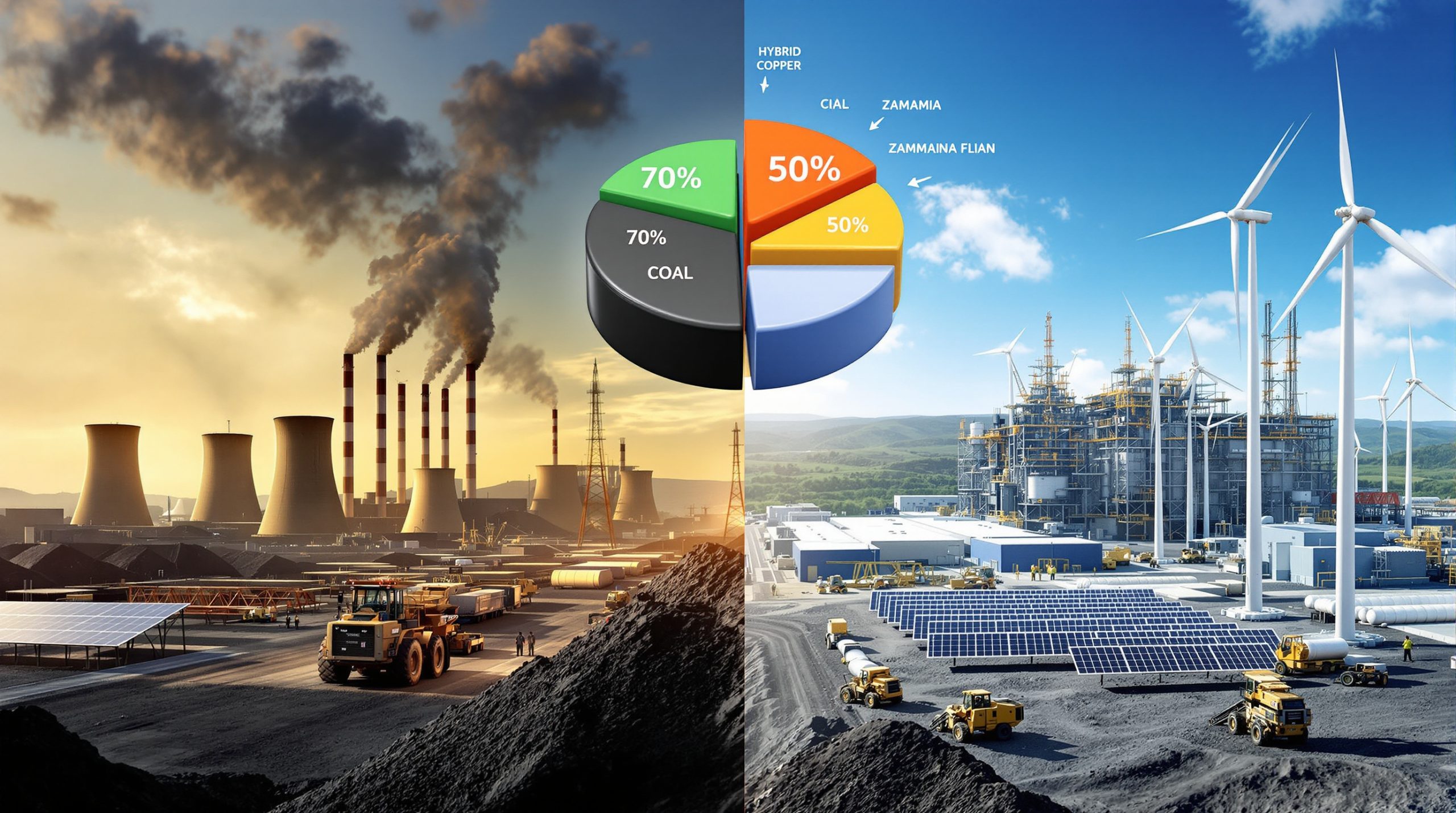What Are Rare Earth Elements and Why Are They Important?
Understanding Rare Earth Elements (REEs)
Rare Earth Elements (REEs) comprise a group of 17 chemically similar metallic elements on the periodic table—specifically the 15 lanthanides plus scandium and yttrium. Despite their name, most REEs are relatively abundant in the Earth's crust, but they rarely occur in concentrated, economically viable deposits. What makes these elements truly "rare" is their dispersed nature and the complex, environmentally challenging processes required to separate them from surrounding materials.
The strategic importance of REEs cannot be overstated. These elements possess unique magnetic, luminescent, and electrochemical properties that make them irreplaceable in many high-tech applications. Neodymium, praseodymium, dysprosium, and terbium are crucial for creating the powerful permanent magnets used in electric vehicle motors, wind turbines, and defense systems. Europium and yttrium enable the red color in television screens and energy-efficient lighting, while lanthanum is essential for oil refinery catalysts and hybrid car batteries.
In 2024, China announced critical mineral export restrictions on six strategically important rare earths: samarium, gadolinium, dysprosium, terbium, lutetium, and yttrium. These elements are particularly critical for advanced military systems, quantum computing, and renewable energy technologies. Samarium-cobalt magnets, for instance, are essential in guidance systems that must operate in extreme temperatures, while terbium is used in sonar systems and fuel cells. Dysprosium-enhanced magnets maintain strength under high temperatures, making them crucial for wind turbine generators and electric vehicle motors.
China's Dominance in the REE Market
China's near-monopoly on the global rare earth supply chain represents one of the most successful resource-based strategic policies of the modern era. The country controls approximately 85% of global rare earth processing capacity and accounts for 70% of rare earth mining production worldwide. This dominance didn't happen overnight—it resulted from decades of deliberate industrial policy that recognized the strategic value of these elements long before Western nations did.
Beginning in the 1980s, China invested heavily in rare earth mining and processing while many Western facilities closed due to environmental concerns and lower-cost competition. By the early 2000s, even rare earths mined elsewhere were typically sent to China for processing. The Mountain Pass mine in California, once the world's largest rare earth producer, temporarily ceased operations in 2002, symbolizing the complete shift of this strategic industry to Chinese control.
Beijing's 2024 export restrictions on six rare earths represent a calculated escalation in response to U.S. tariffs on Chinese goods and technology transfer restrictions. These controls target materials essential for military and clean energy applications, leveraging China's supply chain dominance as geopolitical leverage. The export restrictions don't constitute a complete ban but require special export licenses that create uncertainty and potential supply disruptions for non-Chinese manufacturers.
The implications for global supply chains are profound. Defense contractors, electric vehicle manufacturers, and renewable energy companies face potential material shortages, price volatility, and production delays. This vulnerability has accelerated efforts to establish domestic supply chains in the United States, Europe, and Australia—with Energy Fuels positioned as a key player in this strategic rebalancing.
How Is Energy Fuels Responding to Chinese Export Controls?
Energy Fuels' Rare Earth Production Capabilities
Energy Fuels operates the White Mesa Mill in Blanding, Utah—the only fully licensed and operating conventional uranium mill in the United States. This facility has become a cornerstone of America's emerging rare earth supply chain due to its unique processing capabilities and existing infrastructure. Since 2021, the company has repurposed portions of this facility to process monazite sand, a rare-earth-rich mineral that contains up to 55-65% total rare earth oxides.
In a significant milestone, Energy Fuels has achieved commercial production of neodymium-praseodymium (NdPr) oxide, the most valuable rare earth product by volume. Mark Chalmers, President and CEO of Energy Fuels, noted: "Our ability to produce commercial quantities of NdPr places us among a very select group of companies outside China with this capability. We're now focused on scaling production and optimizing our separation processes."
The Phase 1 separation circuit at White Mesa has demonstrated capacity to produce approximately 850-1,000 metric tonnes of NdPr oxide annually. What makes Energy Fuels particularly strategic in the current geopolitical context is its technical capability to produce all six rare earth oxides currently subject to Chinese export controls. Laboratory-scale production of samarium, gadolinium, dysprosium, terbium, lutetium, and yttrium has been achieved, with plans to scale these capabilities in response to market demand.
White Mesa Mill Expansion Plans
Energy Fuels' current processing configuration can handle approximately 10,000 tonnes of monazite concentrate annually. However, the company has unveiled ambitious expansion plans that would increase this capacity sixfold to 60,000 tonnes. This expansion represents one of the most significant rare earth processing projects outside China and would establish Energy Fuels as a major global producer.
The company is upgrading its engineering studies from prefeasibility to full feasibility in 2024, with construction on the expanded facilities potentially beginning in late 2024 or early 2025. The expansion timeline anticipates commercial production from the enhanced facilities by 2027-2028, aligning with projected increases in domestic monazite supply from U.S. mineral sands operations.
The investment requirements for this scaled production are substantial, estimated between $200-250 million for the full build-out. Energy Fuels is pursuing a combination of funding sources, including potential federal grants for critical minerals designed to secure domestic rare earth supply chains. The company's strong balance sheet, with approximately $150 million in cash and marketable securities, provides a foundation for this expansion without immediate need for dilutive equity financing.
What Technology Is Energy Fuels Using for Rare Earth Production?
Monazite Processing Advantages
Energy Fuels' approach to rare earth production centers on processing monazite sand, a mineral byproduct of heavy mineral sands mining operations in the southeastern United States and elsewhere. This strategy offers several significant advantages over conventional rare earth mining and processing. Monazite typically contains 55-65% total rare earth oxides—a concentration far higher than most primary rare earth ores, which often contain just 1-10% rare earth content.
By leveraging monazite from existing mineral sands operations, Energy Fuels effectively eliminates the mining stage of rare earth production, reducing capital costs and environmental impacts. The company has secured supply agreements with Chemours and other mineral sands producers, providing a steady stream of feedstock without the need to develop its own mining operations. This approach enables Energy Fuels to focus its expertise and capital on the more valuable downstream processing stages.
Since 2021, the company has built significant expertise in rare earth processing, starting with lab-scale separation and advancing to pilot-scale production of multiple rare earth products. Energy Fuels has developed proprietary separation technologies specifically adapted for monazite processing, with demonstrated capabilities across the entire spectrum of light, mid, and heavy rare earth oxides. A key innovation has been adapting uranium processing technology and infrastructure at White Mesa for rare earth extraction, leveraging decades of experience with complex extraction circuits.
Technical Challenges and Solutions
Separation of individual rare earth elements presents one of the most technically challenging processes in materials science. These elements share nearly identical chemical properties, requiring sophisticated multi-stage separation processes to achieve the high purity levels demanded by end-users. Energy Fuels employs solvent extraction technology—a series of chemical processes that selectively separate each rare earth element based on subtle differences in their atomic properties.
The company has implemented rigorous environmental controls at the White Mesa facility to address the processing challenges associated with monazite. Unlike many international operations, particularly those in China, Energy Fuels operates under strict U.S. environmental regulations and maintains comprehensive waste management systems. The facility's existing radioactive materials license provides a crucial advantage, as monazite naturally contains small amounts of uranium and thorium that must be properly managed during processing.
Quality control represents another critical aspect of rare earth production. Most high-tech applications require rare earth oxides with purity levels of 99.5% or higher. Energy Fuels has demonstrated the ability to achieve these specifications through its separation processes, with some products reaching 99.9% purity. The company employs advanced analytical techniques, including inductively coupled plasma mass spectrometry (ICP-MS), to verify product purity and consistency.
The transition from pilot to commercial production presents scaling challenges that Energy Fuels is systematically addressing. The company has successfully scaled its initial mixed rare earth carbonate production to commercial levels and is now applying these lessons to the more complex separation stages. By taking an incremental approach—first achieving commercial production of NdPr before scaling other rare earth separations—Energy Fuels is managing technical risk while steadily expanding its product portfolio.
What Is the Current State of U.S. Rare Earth Supply Chain?
U.S. Rare Earth Production Landscape
The United States currently faces a profound vulnerability in its rare earth supply chain, with limited domestic capabilities across mining, processing, metal production, and magnet manufacturing. The Mountain Pass mine in California, operated by MP Materials, stands as the only producing rare earth mine in the U.S., accounting for approximately 15% of global rare earth concentrate production. However, the absence of commercial-scale separation facilities in the U.S. has historically forced Mountain Pass to export its concentrate to China for processing.
This dependency on foreign imports extends throughout the rare earth value chain. Prior to Energy Fuels' recent achievements, the U.S. had no commercial production of separated rare earth oxides, relying entirely on imports for these critical materials. The situation further deteriorates downstream, with negligible domestic capacity for converting rare earth oxides into metals, alloys, and finished magnets—the forms required by defense contractors and clean technology manufacturers.
Government initiatives to address these vulnerabilities have accelerated in recent years. The Biden administration's 100-day supply chain review identified rare earth elements as critical to national security and economic prosperity. This recognition has translated into funding through the Defense Production Act, Department of Energy grants, and provisions in the Inflation Reduction Act supporting domestic critical mineral production. Despite these efforts, building a resilient rare earth supply chain requires years of consistent investment and policy support.
Supply Security Challenges
Energy Fuels has positioned itself as a key player in rebuilding the U.S. rare earth supply chain, but several supply security challenges remain. The company has secured monazite supply agreements with mineral sands producers, primarily Chemours, which provide feedstock for current operations. However, scaling to the planned 60,000-tonne annual processing capacity will require additional supply sources.
A significant milestone for domestic supply security is expected in 2028, when several U.S. mineral sands projects are projected to begin production. These operations could potentially supply Energy Fuels with domestically-sourced monazite, reducing reliance on international sources. Until then, the company will continue to rely on third-party suppliers, including potential international sources from Australia and Africa, to meet its feedstock requirements.
The fragility of the broader rare earth supply chain extends beyond mining and initial processing. The U.S. currently lacks sufficient metallization capacity to convert rare earth oxides into metals and alloys. Similarly, magnet manufacturing remains heavily concentrated in China, with limited Western alternatives. This creates a situation where Energy Fuels might produce high-quality rare earth oxides domestically but still face bottlenecks in converting these materials into end-use products within a secure supply chain.
Strategic stockpiling has reemerged as a supply security measure for rare earth elements. The Defense Logistics Agency has expanded its rare earth purchasing program, creating a buffer against short-term supply disruptions. Private sector companies, particularly in the defense and automotive sectors, are also building inventories of critical rare earths to mitigate supply risks. These stockpiling efforts provide crucial time for developing more sustainable supply solutions while ensuring continuity for essential applications.
What Are the Market Implications of Energy Fuels' Capabilities?
Financial and Market Position
Energy Fuels holds a unique position in the North American critical minerals sector, with a market capitalization of approximately C$1.37 billion as of April 2024. The company's stock has demonstrated sensitivity to rare earth developments, with a notable 5.2% increase following announcements of commercial-scale neodymium-praseodymium production capabilities. This market response reflects growing investor recognition of the strategic value of rare earth production outside China.
The company's financial structure balances uranium and rare earth revenue streams, providing diversification that few competitors can match. While uranium remains Energy Fuels' historical core business, rare earth production represents an increasingly significant growth vector. Current projections suggest rare earth products could contribute 30-40% of total revenue by 2026, assuming successful scaling of separation capabilities and stable market pricing.
The investment requirements for expanded rare earth production are substantial but manageable within Energy Fuels' capital structure. The Phase 2 expansion, estimated at $200-250 million, represents the most significant capital expenditure in the company's history. However, with approximately $150 million in cash and marketable securities, plus potential government support through various critical minerals programs, Energy Fuels is positioned to fund this expansion without immediate need for significant dilutive financing.
Revenue projections from rare earth oxide sales vary based on production volumes and market pricing. At current rare earth prices and planned Phase 1 production levels, the NdPr oxide production alone could generate $50-70 million in annual revenue. The expansion to include the six rare earths subject to Chinese export controls could add an additional $80-100 million in revenue potential at full production, though the timeline for achieving these volumes extends into 2027-2028.
Competitive Positioning
Energy Fuels' competitive positioning in the rare earth market stems from several structural advantages. Unlike most emerging rare earth companies focusing solely on mining, Energy Fuels leverages existing processing infrastructure at its White Mesa Mill. This established facility provides regulatory certainty and significantly reduces capital requirements compared to greenfield projects. The company's experience with complex chemical processes from uranium production has provided transferable expertise for rare earth separation.
In comparison with other North American rare earth producers, Energy Fuels holds a distinctive market position. MP Materials operates the continent's only producing rare earth mine at Mountain Pass but currently lacks domestic separation capabilities. Several Canadian companies, including Neo Performance Materials, possess separation expertise but depend on Chinese feedstock. Energy Fuels' integrated approach—processing monazite from mineral sands operations directly to separated oxides—represents a unique business model in the Western rare earth landscape.
Strategic partnerships form a crucial element of Energy Fuels' market strategy. The company has secured supply agreements with Chemours and other mineral sands producers to ensure monazite feedstock availability. On the customer side, Energy Fuels has engaged with multiple potential offtake partners across the defense, automotive, and renewable energy sectors, though specific agreements remain confidential. These partnerships extend beyond simple supply contracts to include technical collaboration on product specifications and quality requirements.
The company's long-term market positioning centers on establishing a secure, environmentally responsible rare earth supply chain that reduces North American dependency on Chinese processing. Energy Fuels has expressed interest in potential downstream integration, either through partnerships or acquisitions, to expand into rare earth metals and alloys. This vertical integration strategy could capture additional value while addressing critical supply chain vulnerabilities in the Western rare earth ecosystem.
How Does This Development Impact U.S.-China Trade Relations?
Geopolitical Implications
Rare earth elements have emerged as a high-stakes leverage point in the increasingly tense U.S.-China trade relationship. China's announcement of export controls on six strategic rare earths represents a calculated response to U.S. tariffs, technology restrictions, and semiconductor export controls. This rare earth "leverage" isn't new—China briefly restricted rare earth exports to Japan in 2010 during a territorial dispute, providing a preview of how these materials could be weaponized in international relations.
The Trump administration has characterized China's rare earth export controls as "economic coercion" and responded by fast-tracking permitting for critical mineral projects. In March 2024, the administration announced expedited reviews for ten mining and processing projects under the National Environmental Policy Act (NEPA), with rare earth developments receiving priority consideration. This acceleration of the typically lengthy permitting process reflects the national security dimensions now attributed to rare earth supply.
Beyond the immediate trade dispute, rare earth supply security has profound implications for U.S. defense capabilities. Modern weapons systems depend heavily on rare earth elements—a single F-35 fighter jet contains nearly 920 pounds of rare earth materials. The Department of Defense has identified reliable access to rare earths as essential for maintaining technological superiority and operational readiness. Energy Fuels' production capabilities directly address vulnerabilities identified in multiple defense industrial base assessments.
This geopolitical context has transformed what would otherwise be a purely commercial venture into a matter of national strategic interest. Energy Fuels' rare earth production capabilities represent more than just a business opportunity—they contribute to reducing America's supply vulnerability in a critical minerals race. This strategic dimension increases the likelihood of continued government support while potentially insulating the company from normal market pressures through preferential procurement policies and strategic stockpiling programs.
Policy and Regulatory Environment
U.S. government support for domestic rare earth production has evolved from rhetoric to substantive funding and policy mechanisms. The Department of Energy's Critical Materials Institute, established in 2013, has expanded its research focus on rare earth processing technologies. More recently, the Bipartisan Infrastructure Law allocated $500 million to critical materials development, with rare earth projects eligible for significant portions of this funding.
The permitting and regulatory landscape for rare earth projects has seen notable reforms designed to accelerate domestic production. Traditional mining permits that once required 7-10 years can potentially be completed in half that time under new expedite
Ready to Stay Ahead of ASX Mineral Discoveries?
Gain real-time alerts on significant ASX mineral discoveries powered by Discovery Alert's proprietary Discovery IQ model, and understand why historic discoveries can generate substantial returns by visiting Discovery Alert's dedicated discoveries page. Begin your 30-day free trial today to position yourself ahead of the market.




